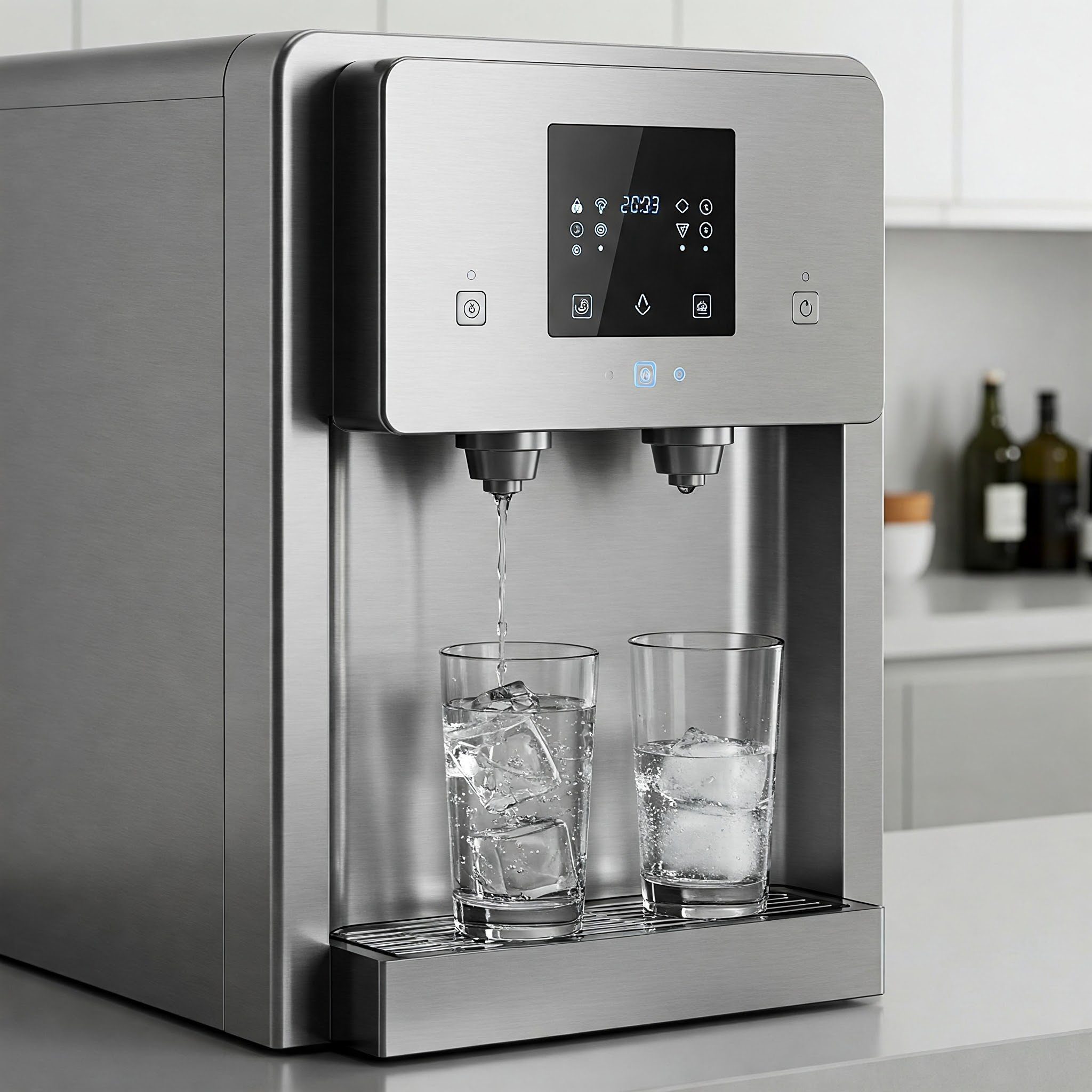Ice/Water Dispensers: Convenient Solutions for Chilled Water and Ice on Demand
Ice/water dispensers are essential appliances for homes, offices, restaurants, and healthcare facilities, providing instant access to ice and cold water. These machines enhance hygiene, efficiency, and convenience, making them ideal for self-service hydration stations in high-traffic areas.
Whether you need an ice/water dispenser for personal use, a busy restaurant, or a medical facility, choosing the right model ensures reliable performance, energy efficiency, and easy maintenance.
What Are Ice/Water Dispensers?
Ice/water dispensers are dual-function machines that dispense ice, chilled water, or both. They eliminate the need for manual ice-making and bottled water storage, making them a cost-effective and space-saving solution.
They are commonly used in:
- Offices & workplaces – To provide filtered drinking water and ice for employees.
- Restaurants & cafés – For quick drink preparation and self-service stations.
- Hotels & hospitality businesses – To ensure guests have 24/7 access to ice and cold water.
- Hospitals & healthcare facilities – For sanitary, hands-free hydration solutions.
- Gyms & fitness centers – To keep members hydrated with fresh, cold water.
- Homes & kitchens – To eliminate the need for bottled water and ice trays.
Types of Ice/Water Dispensers
1. Countertop Ice/Water Dispensers
- Description: Compact dispensers designed to sit on countertops for small spaces.
- Best For: Homes, small offices, cafés, and break rooms.
- Example Items: Filtered water, nugget ice, crushed ice.
- Advantages:
- Space-saving design.
- Ideal for low-volume use.
- Often includes built-in water filtration.
2. Freestanding Ice/Water Dispensers
- Description: Large, floor-standing dispensers capable of producing and storing high volumes of ice and water.
- Best For: Offices, hotels, and healthcare facilities.
- Example Items: Cube ice, chilled water, nugget ice.
- Advantages:
- Suitable for high-traffic areas.
- Continuous supply of ice and cold water.
- Many models offer hands-free operation.
3. Under-Counter Ice/Water Dispensers
- Description: Built-in dispensers installed under countertops, offering an integrated and space-saving solution.
- Best For: Restaurants, bars, and high-volume beverage stations.
- Example Items: Filtered water, ice cubes, crushed ice.
- Advantages:
- Saves counter space while providing on-demand ice and water.
- Ideal for hospitality and food service industries.
- Hidden installation for a sleek, modern look.
4. Wall-Mounted Ice/Water Dispensers
- Description: Dispensers attached to walls for public spaces and high-traffic areas.
- Best For: Schools, gyms, hospitals, and commercial buildings.
- Example Items: Chilled water, crushed ice, cube ice.
- Advantages:
- Space-efficient and accessible.
- Touchless dispensing options for hygiene.
- Ideal for self-service hydration stations.
5. Ice/Water Dispensers with Filtration Systems
- Description: Dispensers that filter, chill, and dispense purified water and ice.
- Best For: Offices, healthcare facilities, and homes.
- Example Items: Filtered drinking water, clean ice cubes.
- Advantages:
- Removes impurities, chlorine, and odors.
- Provides fresh, great-tasting water.
- Ensures sanitary, contaminant-free ice production.
Key Features of Ice/Water Dispensers
- Ice Production Capacity – Ranges from small (10 lbs/day) to large (500+ lbs/day) models.
- Water Filtration System – Ensures clean, purified drinking water.
- Dispensing Method – Options include manual tap, push-button, or hands-free sensor activation.
- Ice Type Options – Choose from nugget ice, crushed ice, cube ice, or flake ice.
- Cooling Technology – Some models instantly chill water for on-demand refreshing drinks.
- Energy Efficiency – Many modern dispensers feature low-energy compressors to reduce power consumption.
Applications of Ice/Water Dispensers
- Corporate Offices – To provide employees with filtered drinking water and ice.
- Restaurants & Cafés – For quick drink preparation and self-service areas.
- Hotels & Hospitality Businesses – To offer guests 24/7 access to ice and water.
- Hospitals & Clinics – For hygienic water and ice dispensing.
- Gyms & Fitness Centers – To keep members hydrated with fresh, cold water.
- Homes & Kitchens – To eliminate the need for bottled water and ice trays.
Benefits of Ice/Water Dispensers
- Instant Hydration – Provides on-demand ice and water without waiting.
- Hygienic & Hands-Free Options – Reduces germ spread in shared environments.
- Eco-Friendly – Eliminates the need for plastic water bottles and bagged ice.
- Cost-Effective – Saves money compared to buying bottled water and ice.
- Energy Efficient – Many models use eco-friendly cooling systems.
Maintenance Tips for Ice/Water Dispensers
Daily Maintenance
- Wipe down the exterior and dispensing area to keep it clean.
- Empty and clean the drip tray to prevent water buildup.
- Ensure the water filtration system is working properly.
Weekly Maintenance
- Sanitize the water dispensing nozzle to prevent bacterial growth.
- Inspect the ice-making components for blockages.
- Check the refrigeration system for proper cooling.
Monthly Maintenance
- Replace the water filter (if applicable) to maintain water purity.
- Defrost the ice storage bin (for models prone to ice buildup).
- Deep clean internal components to remove mineral deposits.
Troubleshooting Common Issues
1. Water is Not Dispensing Properly
- Cause: Clogged water filter or air in the system.
- Solution: Replace the filter and flush air from the water lines.
2. Ice Production is Slow or Stopped
- Cause: Dirty condenser coils or low water pressure.
- Solution: Clean the coils and check for proper water supply.
3. Ice Tastes or Smells Bad
- Cause: Old water filter or bacterial buildup.
- Solution: Replace the filter and sanitize the system.
4. Excessive Noise from the Machine
- Cause: Loose components or a failing compressor.
- Solution: Tighten screws and seek professional servicing if needed.
Choosing the Right Ice/Water Dispenser
Factors to Consider:
Budget – Home models are affordable, while commercial models require a higher investment.
Capacity Requirements – Small units for home/office use, large-capacity models for commercial settings.
Filtration System – Ensures clean, fresh drinking water.
Ice Production Speed – High-volume locations need fast ice production.
Dispensing Method – Manual, button-activated, or touch-free sensor.
Space Availability – Choose between countertop, freestanding, or under-counter models.


